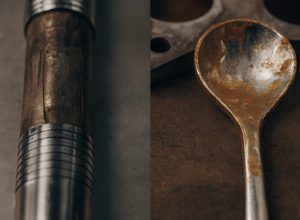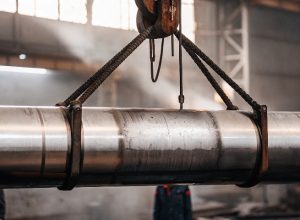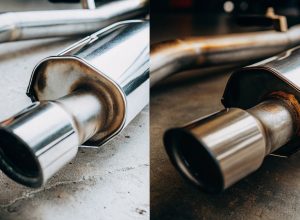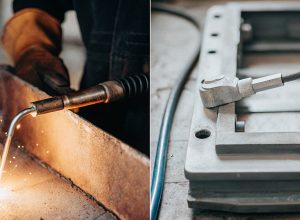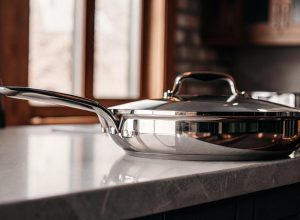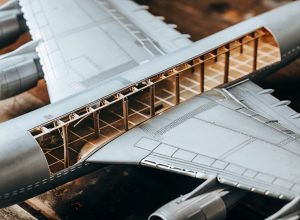You’re worried about choosing the right material. This decision impacts performance and cost. I will help you understand the key differences between pure titanium and its alloys.
Generally, titanium alloys are stronger and less flexible than pure titanium. Flexibility is complex. It depends on the specific alloy and how it’s made. Some alloys are specially designed for controlled flexibility in applications like medical implants, offering unique performance benefits.
I talk with product managers like Lisa all the time. She works at a chemical equipment company and needs clear facts for her team. She needs to know if a material will work without causing problems later. Understanding the foundation of these metals is the first step. It helps you make confident choices for your projects. Let’s look at the basic differences first.
What is the difference between pure titanium and titanium alloy?
It feels like a simple question. But the details are critical. Choosing wrong can cause project failures and budget overruns. Let’s break down the main differences simply.
Pure titanium is a single element with excellent corrosion resistance but lower strength. Titanium alloys are mixtures. They combine titanium with elements like aluminum and vanadium to greatly increase strength and hardness for tough industrial jobs.
In my work here in Baoji, we handle both types every day. Think of pure titanium, often called Commercially Pure (CP) titanium, as the baseline. It comes in different grades, from Grade 1 (the softest and most formable) to Grade 4 (the strongest of the pure grades). Its main advantage is incredible resistance to corrosion, especially in saltwater or chemical environments. This makes it perfect for things like heat exchangers or marine hardware1.
Titanium alloys are different. We create them by melting titanium and mixing in other specific metals. The goal is to improve its mechanical properties. For example, the most common alloy is Ti-6Al-4V. It contains 6% aluminum and 4% vanadium. These additions change the material’s internal crystal structure, making it much stronger than any pure titanium grade. This is why aerospace companies like Boeing depend on it for critical parts that need high strength without the weight of steel.
Here is a simple table to show the difference:
| Property | Commercially Pure (CP) Titanium | Titanium Alloy (e.g., Ti-6Al-4V) |
|---|---|---|
| Composition | 99%+ Titanium | Titanium + other elements (Al, V, etc.) |
| Strength | Lower | Much Higher |
| Flexibility/Ductility | Higher (more formable) | Lower (stiffer, less formable) |
| Common Use | Chemical processing, marine parts | Aerospace, medical implants, high-performance parts |
Are titanium alloys flexible?
You hear that alloys are strong, but does that mean they are stiff and brittle? Some projects need strength but also some "give." Let’s look at what flexibility means for alloys.
Yes, but it’s a specific kind of flexibility. Alloys are generally stiffer than pure titanium. But some, like Grade 23, are made for controlled flexibility and fracture resistance. This makes them ideal for medical implants that must move safely with the human body.
In engineering, "flexibility" can mean two things. First is the "modulus of elasticity2," which measures stiffness. A lower modulus means the material is springier. Titanium’s modulus is about half that of steel, which is why it feels somewhat flexible. Second is "elongation3," which measures how much a material can bend before it breaks.
When we add elements to create an alloy, we usually increase the stiffness, so it becomes less flexible in that sense. However, we can also improve other properties. At Titonest, our R&D tests show that some alloys are superstars in specific situations. Take Grade 23, also known as Ti-6Al-4V ELI (Extra Low Interstitial). By reducing elements like oxygen and iron, we make it much more ductile and resistant to cracking. It’s still very strong, but it has a "controlled flexibility" that allows it to be used for things like spinal rods or hip joints, which need to bend slightly without failing. This is a perfect example of how we engineer an alloy for a specific, demanding job.
Why is titanium alloy stronger than titanium?
How does adding a small amount of metal make titanium so much stronger? This seems strange. Not understanding this can limit your choices. I will explain the science in a simple way.
Alloying elements change the perfect crystal structure of pure titanium. This change makes it harder for the atomic layers inside the metal to slip past each other. Heat treatment refines this structure even more, locking everything in place and creating a much stronger material.
Imagine pure titanium’s atoms are arranged in neat, orderly rows. When you apply force, these rows can slide over one another relatively easily. This is what makes it softer and more ductile. Now, when we add alloying elements like aluminum and vanadium, their atoms are a different size. They get into the neat rows and disrupt them, creating roadblocks. These roadblocks "pin" the structure in place, preventing the layers from slipping. This resistance to slipping is what we measure as strength.
At our factory in Baoji, we take this a step further. After alloying, we use processes like high-pressure forging and annealing. Forging physically breaks down and reforms the internal grain structure, making it finer and more tangled. Then, annealing (a precise heating and cooling cycle) locks in these beneficial changes. This combination of alloying and heat treatment creates the incredible strength-to-weight ratio that materials like Ti-6Al-4V are famous for. It’s how we turn a basic metal into a material that can withstand the forces of a jet engine.
Is titanium alloy soft?
We have discussed strength and flexibility. But is titanium alloy soft? This might seem like an odd question. But the answer is important for manufacturing and performance.
No, most titanium alloys are hard, not soft. They are much harder than pure titanium and many steels. Hardness is a primary reason for alloying. The softest materials are the pure titanium grades, like Grade 1, which are valued for being easy to form.
Hardness is a material’s ability to resist scratches, dents, and wear. It’s different from strength, but they are often related. While pure titanium is known for being lightweight and corrosion-resistant, it’s actually quite soft. Grade 1 CP Titanium can be scratched fairly easily. This softness makes it highly ductile and easy to form into complex shapes like plates for heat exchangers or deep-drawn parts.
Titanium alloys are the complete opposite. The same atomic disruptions that make them strong also make them very hard. Ti-6Al-4V is significantly harder than pure titanium and is known for being difficult to machine. This hardness is a huge advantage in applications where parts rub against each other or face abrasive environments. It ensures the component keeps its shape and integrity for a long time. For a product manager like Lisa, the choice is clear: if you need to bend or shape the part easily, you start with pure titanium. If you need it to resist wear and hold its shape under stress, you need an alloy.
| Material | Key Characteristic | Best For |
|---|---|---|
| CP Titanium (Grade 1) | Soft & Very Formable | Deep drawing, complex shapes, chemical tanks |
| CP Titanium (Grade 2) | Balanced Strength & Formability | Pipes, heat exchangers, general fabrication |
| Titanium Alloy (Ti-6Al-4V) | Very Hard & Strong | High-stress parts, aerospace, wear resistance4 |
Conclusion
Titanium alloys are stronger and harder, not more flexible, than pure titanium. But we can engineer specific alloys to have the controlled flexibility5 needed for advanced applications.
-
Discover the advantages of using titanium in marine hardware applications for durability. ↩
-
Understand the concept of modulus of elasticity and its significance in material science. ↩
-
Learn about elongation and how it affects the performance of materials under stress. ↩
-
Understand the concept of wear resistance and its significance in material selection for durability. ↩
-
Discover how controlled flexibility in titanium alloys benefits medical implants and other applications. ↩







